Science
Ten Interesting Science Moments of 2017
Aravindan Neelakandan
Dec 24, 2017, 03:47 PM | Updated 03:46 PM IST
Save & read from anywhere!
Bookmark stories for easy access on any device or the Swarajya app.
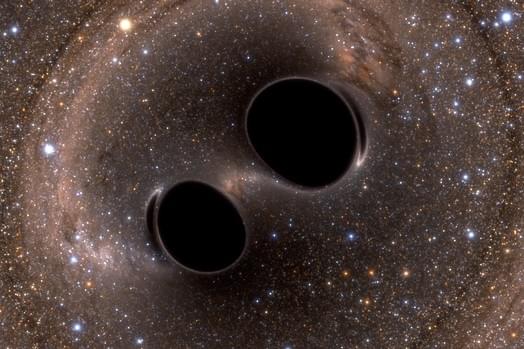
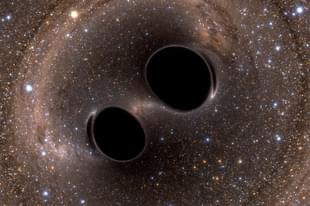
1. Time Crystals
Massachusetts Institute of Technology’s theoretical physicist Frank Anthony Wilczek speculated about ‘time crystals’ in 2012. In the crystals we know, from common salt (the famous NaCl) to snowflakes, atoms are arranged in repetitive patterns. This is in three dimensional space. The time crystals Wilczek speculated, exist in four dimensions. These crystal like structures were conceptualised by Wilczek as electrons travelling in loops and repeating their movement patterns in time, similar to atoms repeating their spatial patterns inside the crystals. The objection to this then was that the proposed state of matter looked dangerously similar to the perpetual action machines of quantum scale. Perpetual action machines are a strict no-no in physics. But Wilczek had argued that, actually, he had proposed that the electrons in his 'time-crystal'-like-state, moving in loops, are more like electrons moving with no resistance, as in a superconductor. For Wilczek, it is a repetitive pattern in time, with no energy input from outside.

By 2015, physicists Masaki Oshikawa and Haruki Watanabe at the University of Tokyo had concluded that it is impossible to create time crystals for any system in its lowest-energy state. However this conclusion, a theorem now, left out systems which have not settled into equilibrium. In 2017, two groups of physicists, one from University of Maryland in College Park and another from Harvard University in Cambridge, Massachusetts, decided to use this small gap and independently arrived at ways of creating 'time crystals'.
In 2015, physicist Shivaji Sondhi and his colleagues at Princeton were studying quantum systems in isolation, to which they gave initial kick-starts. Such systems would initially get excited and soon become chaos. Sondhi et al found that under certain conditions such systems would instead club together to form an exotic state of matter, in which the particles exhibit a repetitive pattern in time. When a physicist from the University of Maryland Chris Monroe heard about this unique state of matter it gave him ideas. He started poking a chain of ten ytterbium ions with lasers. Meanwhile at Harvard, physicists started doing something similar with what are called 'dirty diamonds'. Nitrogen atoms caught inside the diamond, which is made of carbon atoms, are the ones which provided the team from Harvard their needed particles. Poking each Nitrogen atom-space pair inside the diamond with a microwave signal, the team could produce the same time-crystal state.

Both the Maryland and Harvard teams which have succeeded in creating the time crystals have done so based on the paper of Prof Sondhi and team including Dr Vedika Khemani. Time crystals are one of the possible states of matter which we have managed to hypothesize and then create in the lab, points out Dr Khemani. According to Monroe, time crystals can also play an important role in the development of quantum computing.
2. Neutron Star collision
The international science community is in consensus that this year's most spectacular science event is the collision of two neutron stars 130 million light years away in the NGC 4993 galaxy, first picked up by the United States-based laser interferometer gravitational-wave observatory (LIGO).
The event was extraordinary for various reasons. Along with gravitational waves, there were also accompanying electromagnetic waves. The Giant Metrewave Radio Telescope (GMRT) in Pune played a crucial role in establishing the nature of the celestial object now termed GW170817. Neutron stars are highly dense cores of collapsed stars. The binary neutron stars, each measuring merely twenty kilometres across, were 1.1 to 1.6 times the mass of the sun. Rotating around each other for about one-and -a- half minutes, they collided into each other creating a spectacular celestial event. The event would eventually reach the astronomers on planet earth 130 million years later.
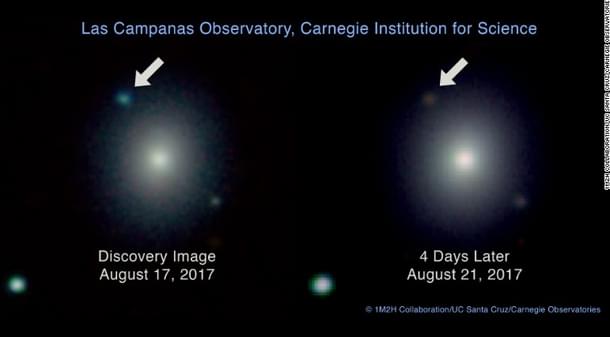
Indian contribution helped in solving a major mystery in the observations of the event. So far, it has been thought that such nuclear star collision would result in jets of radiation in the form of short Gamma Ray Bursts (GRB). Such jet emission would weaken with time. However, that didnt happen in this case. Based mainly on observations of the phenomenon by GMRT, it was concluded that instead of the short bursts, neutron rich surroundings created a cocoon, to which the jet blast was transferred.
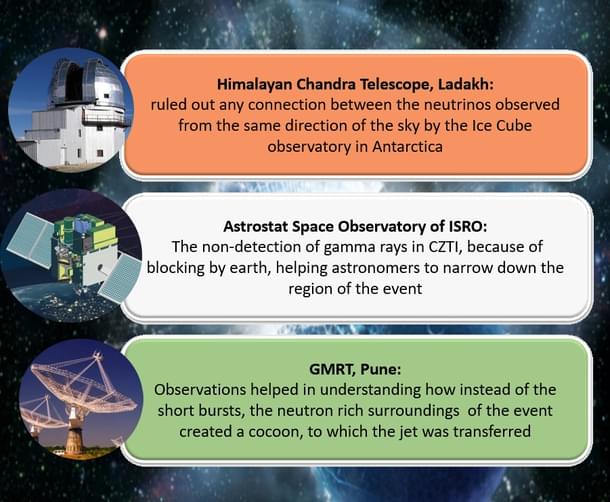
In the international team of 1480 scientists and 120 institutions, 40 scientists from 13 Indian institutions, played an important role. Apart from GMRT, Indian Space Research Organisation’s (ISRO) sky-based ASTROSAT, and the Himalayan Chandra telescope also played a significant role in the discovery of gravitational waves. When the Cadmium Zinc Telluride Imager (CZTI) in the ASTROSAT did not detect the gamma ray burst from the collision event, it became clear that it is because the source was being blocked by the Earth – a kind of an astronomical blindspot. Their knowledge of the part of the celestial side that was blocked by the earth helped astronomers to narrow down the region of the event.
3. ISRO world record with 104 satellites launch and India's space diplomacy
On 15 February this year (2017), ISRO set a world record by launching 104 satellites. Nano satellites, usually weighing from one to 10 kilogram, can be used for a variety of purposes. One of the 104 satellites that ISRO launched, belonged to Israel’s Ben-Gurion University of the Negev. According to 'The Times of Israel', the satellite, “a little larger than a milk carton”, is interestingly the first Israeli nano-satellite which will also allow “for the first time any Israeli university to have access to data from an Israeli nano-satellite for research purposes”. Apart from the Israeli satellite and one by the United Arab Emirates, most of the satellites are from the United States. ISRO also has three satellites of its own as part of the mission, one weighing 730 kilograms and the other two weighing 19 kg each. The rest of the 600 kg capacity has been shared by 101 satellites, allowing ISRO to recover half of the cost of the launch. Clearly, this is a significant development for India, especially in terms of expanding the satellite launch market. India, with its soft and digital skills, can add great value to its launch vehicle services, while keeping intact its unique selling point – reliability with cost-effectiveness.
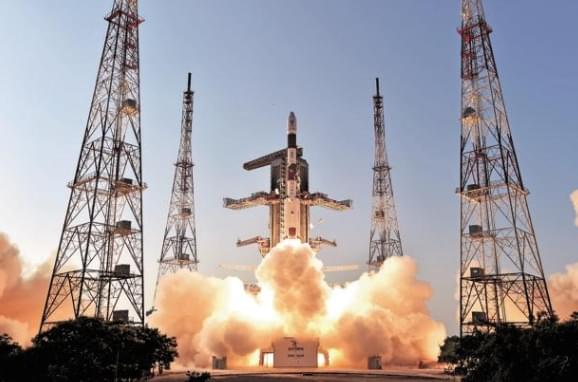
India also launched the South Asia Satellite which is a communication satellite built by the Indian Space Research Organisation (ISRO) to provide a variety of communication services over the South Asian region. Equipped with Ku-band transponders, this satellite aims to create a techno-fraternity for development in the south asian region. The 2230 kg satellite launched on May 2017 from Satish Dhawan Space Centre, Sriharikota is Indian Prime Minister’s gift to the South Asian Association for Regional Cooperation (SAARC) nations. SAARC nations including Afghanistan, apart from Bangladesh, Bhutan, Maldives, Nepal, and Sri Lanka, can benefit from the satellite, utilising its services in various domains – from tele-medicine to disaster management.
4. Space to Earth Quantum teleportation
This year China achieved the first successful teleportation of a photon into space. On 16 August 2016, China launched Micius – a satellite which can generate quantum entangled photons. It can send the entangled photons to land stations in Austria and China. With the land station established 4,000 metres above the altitude, at the occupied territory of Tibet (thus reducing the distance of atmospheric interference with the photons), Chinese teams have been creating entangled photon pairs from the base at the rate of 4,000 per second.
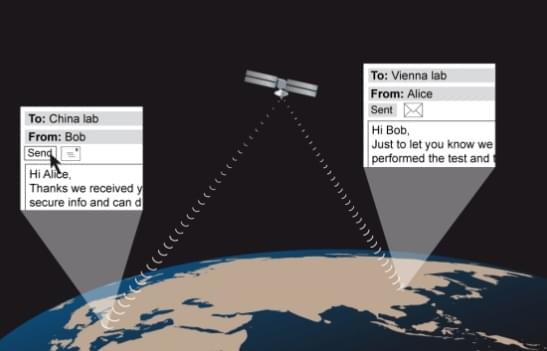
Thirty two days and millions of photons later 911 cases turned triumphant. In July this year, the Chinese team officially announced through a paper titled 'Ground-to-satellite quantum teleportation', the ‘the first quantum teleportation of independent single-photon qubits from a ground observatory to a low Earth orbit satellite — through an up-link channel — with a distance up to 1,400 km’. They have further announced that their achievement ‘establishes the first ground-to-satellite up-link for faithful and ultra-long-distance quantum teleportation, an essential step toward global-scale quantum internet’.
5. Celestial Saraswati
In July, a team of Indian astronomers with Inter University Centre for Astronomy and Astrophysics (IUCAA), Pune ‘s associate professor Joydeep Bagchi as lead author, announced the discovery of the Saraswati supercluster. Spanning 600 million light-years across the Saraswati supercluster, it contains in it a mass equal to that of more than 20 million billion suns.
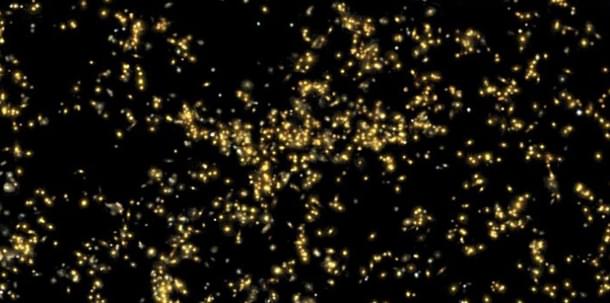
Located at four billion light years away, this is the first supercluster that has been discovered so far away from earth. With 43 galaxy groups and clusters, with about 400 galaxies, Saraswati will become important in understanding the early stages of the universe. In their paper 'Saraswati: An Extremely Massive ~ 200 Megaparsec Scale Supercluster' published in the 'Astrophysics Journal', Indian astronomers pointed out that Saraswati 'sheds light on the role of dark energy and cosmological initial conditions in supercluster formation, and tests the competing cosmological models'.
6. Terrestrial Saraswati
Unlike the celestial counterpart, the terrestrial Saraswati river has been at the center of a controversy in the last few decades. Two reports which have appeared in 'Nature' this year throw some very interesting lights into the mystery while further deepening the same. The first paper titled 'Tracing the Vedic Saraswati River in the Great Rann of Kachchh' is authored by geologist D M Maurya of the M S University of Baroda, Vadodara and his team along with geologist Liviu Giosan of Woods Hole Oceanographic Institution, US.
Vedas describe a river named Saraswati that flows from the Himalayas to the western sea. Hindu tradition holds that the river disappeared subsequently. The paper while doubting 'such a river during the Harappan Bronze Age and the Iron Age Vedic period' also establishes the presence of a 'Saraswati like river' which flowed in the region 10K years ago. The paper at the same time considered 'freshwater input from the Indus, and perhaps from the Ghaggar-Hakra-Nara, probably sustained a productive marine environment as well as navigability toward old coastal Harappan and historic towns in the region'.
The second important paper, that also appeared in ‘Nature’ is titled 'Counter-intuitive influence of Himalayan river morphodynamics on Indus Civilisation urban settlements'. This paper is considered the most in-depth paper on the issue so far and was authored by Department of Earth Science and Engineering, Imperial College London’s Dr Sanjeev Gupta along with Dr Ajit Singh and Dr Rajiv Sinha of the Department of Earth Sciences, Indian Institute of Technology, Kanpur and an international team of scientists. According to the study, the data shows that there was no major Himalayan river 'contemporaneous with Indus settlements in the Ghaggar-Hakra region and did not sustain the Indus civilisation in this region.' They conclude that 'the locus for the abundant Indus Civilisation urban settlements along the Ghaggar-Hakra palaeochannel was the relict, underfilled topography of a recently abandoned valley of the Himalayan Sutlej river rather than an active Himalayan river.'
Even then, it should be noted that the Harappan civilisation flourished along the bed of this lost river. While the paper rejects a Himalayan fed river nourishing the Harappan civilisation, it suggests that "the relict Sutlej valley acted to focus monsoon-fed seasonal river flow as evidenced by very fine-grained sediments in the upper part of the valley-fill record. This and the potential to pond flood waters in the topographic depression38 formed by the valley likely offered favourable conditions that led Indus populations to preferentially settle along the incised palaeovalley."
Interestingly while the paper rejects a flowing Saraswati during the Harappan times, it also refutes one of the arguments of the Aryan invasionists. They have often claimed that the etymology of the name Saraswati indicated 'a series of meandering branches with lakes and ponds', inconsistent with a mighty flowing river. However such an etymological memory is exactly what is suggested by the present paper.
7. We are in the middle of Sixth Mass extinction- ‘Biological Annihilation’
A study ‘using a sample of 27,600 vertebrate species, and a more detailed analysis documenting the population extinctions between 1900 and 2015 in 177 mammal species' was published in the Proceedings of the National Academy of Sciences of the United States of America (PNAS) journal this year confirmed one of the greatest fears of ecologists and environmental activists. Titled 'Biological annihilation via the ongoing sixth mass extinction signaled by vertebrate population losses and declines', the study conducted by Paul Ehrlich and colleagues was published this year (2017) in PNAS.
The study pointed out that population extinctions 'are orders of magnitude more frequent than species extinctions'. In fact, according to the paper, population extinctions being precursors of species extinction, the Earth’s sixth mass extinction is more severe than percieved. The conclusion is clear and loud: '... we emphasize that the sixth mass extinction is already here and the window for effective action is very short, probably two or three decades at most.'
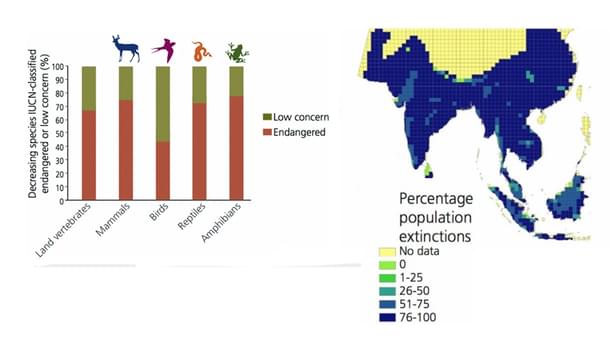
According to the paper 'in the last few decades, habitat loss, over-exploitation, invasive organisms, pollution, toxification, and more recently climate disruption, as well as the interactions among these factors, have led to the catastrophic declines in both the numbers and sizes of populations of both common and rare vertebrate species'. One hundred and seventeen mamallian species have already lost 30 per cent of their geographical area and more than 40 per cent of species have experienced more than 80 per cent shrinkage of population. The paper calls this accelerated sixth mass extinction - 'biological annihilation'.
8. A first discovery of a 'Sea Monster' from Indian Jurassic period
Ichthyosaurs – or 'fish-lizards' are a diverse group of marine dinosaurs that flourished 250 to 90 million years ago. One hundred and fifty million years ago in the region which is today a hot terrain south of the village of Lodai, Gujarat, prowled a group of Ichthyosaurs, which according to the National Geographic was almost the size of a small boat. In their paper published in PLOS in October this year Indian paleontologist and the head of the department of Geology at the University of Delhi, Dr G V R Prasad and his team announced the 'discovery of the first Ichthyosaur from the Jurassic of India'.
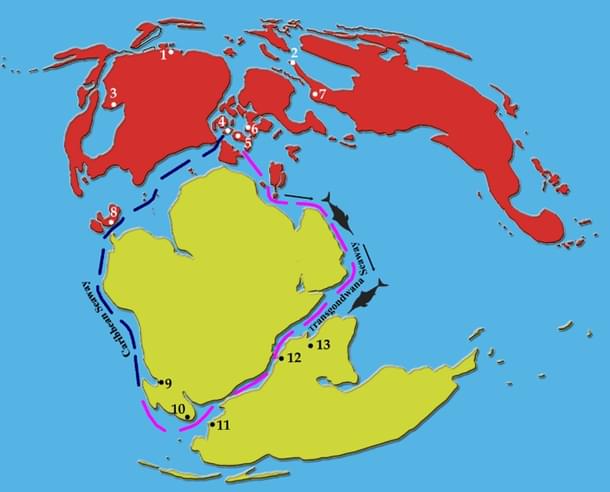
It is in fact 'the first nearly complete articulated skeleton of an ichthyosaur from India and the first record from the Jurassic of India' says the paper. Ichthyosaurs themselves being a very varied group of marine dinosaurs, and given the limited features available to scientists from the present one specimen, it cannot be identified positively with Jurassic ichthyosaur taxa from other parts of the world. However based on the dental characters and vertebral and forefin morphology, scientists are guessing that it may probably belong to a group of Icthyosaurs with large eyes and dolphin like bodies called Ophthalmosauridae. The Indian specimen is 5 to 5.5 metres and is considered to be an adult.
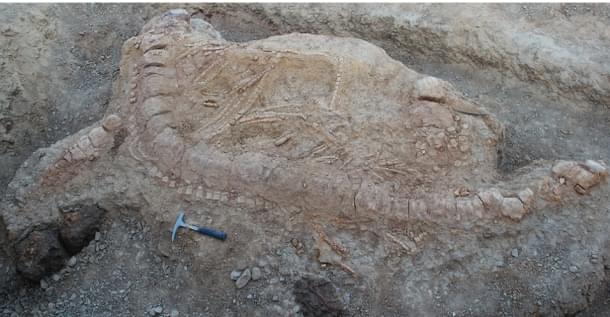
Fossils of this group of Icthyosaur, Ophthalmosaurids have been obtained in the upper Jurassic deposits of Madagascar and South America and now India. This points to 'possible faunal exchanges between the western Tethys and Gondwanan continents through a southern seaway.' It adds to our understanding of the 'Gondwanan palaeobiogeography' 150 million years ago. What kind of life did this Gondwanan Ichthyosaur live?
The preserved teeth reveal that they 'were used to grasp a prey with hard exterior such as armoured fish, crustaceans, and thick-shelled ammonites' and the dental features like 'robust teeth with intense tooth wear' etc. are the ones 'generally observed in top-tier predators'. So, the Ichthyosaur was a dominant marine predator in the region which then presented a tropical lush environment. Pranay Lal's highly fascinating 'Indica' (2016), a journey into deep natural history of what is today the Indian land mass, clearly will need a few pages added about this fascinating discovery.
9. Rendezvous with a curious interstellar visitor
Astronomers from Hawaii discovered a strange object this October. Deep red in colour, 800 metres in length and 80 metres in breadth, it is considered to be our first interstellar visitor. They named it Oumuamua - meaning 'first messenger'.
Could this be a comet? But comets sprout tails when they get close to sun. As they get closer to sun, the comet gets warmer and the gases get released – a process called 'outgassing'. An asteroid perhaps? But, no asteroid spins every seven hours and twenty minutes.
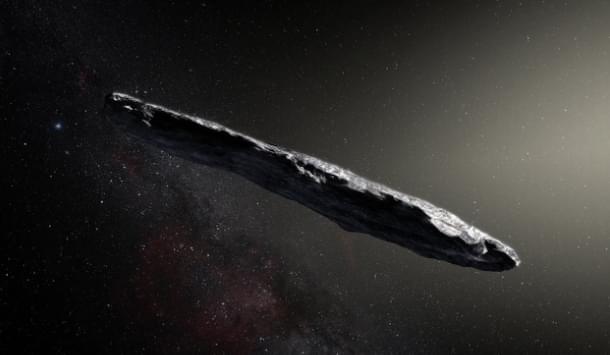
That naturally raises the next interesting question – is Oumuamua an alien probe from another star system? Limited observations of Oumuamua using facilities such as the Search for Extraterrestrial Intelligence (SETI) Institute’s Allen Telescope Array, have turned up nothing. But the interstellar object, already leaving our solar system, is a rotating one.
Soon the West Virgina-based 100-metre Green Bank Telescope, supported by the Breakthrough Listen project of Russian billionaire Yuri Milner, started a 10-hour observation covering the entire rotation, in a wide range of frequencies, looking for signals that may suggest an extra-terrestrial civilisational origin for Oumuamua. On 13 December, the 'Breakthrough Initiative', which has an open-data policy, announced on its website that there is “no evidence of artificial signals emanating from the object so far detected by the Green Bank Telescope, but monitoring and analysis continue”. The announcement further said: “A search for signals that may be of artificial origin has begun, but despite the impressive computational power of the Breakthrough Listen computing cluster at Green Bank, the large data volumes mean that this will take some time to complete.”
10. Crete Footprints and Human Origins
A paper titled Possible hominin footprints from the late Miocene (c. 5.7 Ma) of Crete?published in the journal Proceedings of Geologists’ Association, in October this year (2017), challenged the conventional view of human evolution. “We describe late Miocene tetrapod footprints (tracks) from the Trachilos locality in western Crete (Greece), which show hominin-like characteristics,” announced Per Ahlberg of Uppsala University in Sweden and his team of geologists. “They occur in an emergent horizon... dated to approximately 5.7 Ma (million years ago),” their paper said. Whichever animal made that track was “plantigrade”, is walking on the soles of its feet, entaxonic – that is, having its big toe stronger than the outer digits – and did not have claws. In other words, the creature was bipedal – almost like us humans.
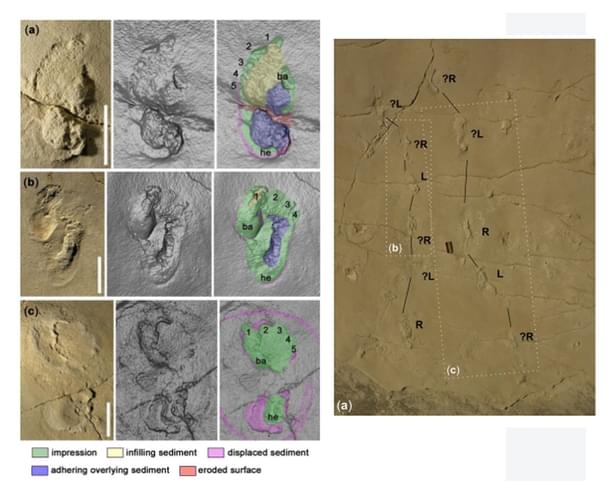
Bipedalism is key to human evolution, as it separated the earliest hominids from the other four-legged great apes. The general textbook convention about human evolution holds that the earliest fossil evidence for bipedalism is provided by the Australopithecus afarensis around 3.9 million years ago. In the first decade of the new millennium, more fossils were unearthed by scientists which showed bipedalism in older species. In 2001, a team of paleontologists led by Brigitte Senut and Martin Pickford discovered hominid fossils, which are now named as a new hominin species, Orrorin tugenensis. A thigh bone fossil of this species led to the conclusion that they probably walked upright when they walked on land.
In 2007, scientists announced the result of 15 years of sustained study of another hominid – the 4.4-million-year-old Ardipithecus ramidus. They also presented the most complete fossil of the species – Ardi. The study of the fossils and three-dimensional reconstructions of Ardipithecus suggest that they were bipedal.
However, they were “not as well-adapted to longer, more strenuous bouts of terrestrial bipedality as were known Australopithecus species”, say Gen Suwa, anthropologist from the University of Tokyo, and his team in their 2014 study of Ardipithecus. It is in this context that the new discovery has come. It not only implies a bipedal hominin almost six million years ago, but discovers it in Europe rather than Africa. Whatever the future holds for the tracks in Crete, there is a strong possibility that down the line, in a decade, the textbook science of human evolution would put the emergence of bipedalism, at least one million years earlier than it is presented today.
Aravindan is a contributing editor at Swarajya.





